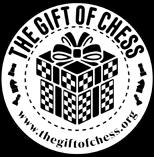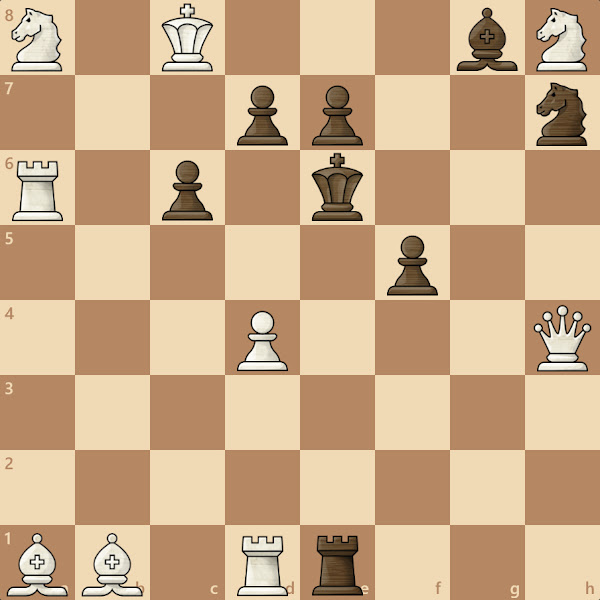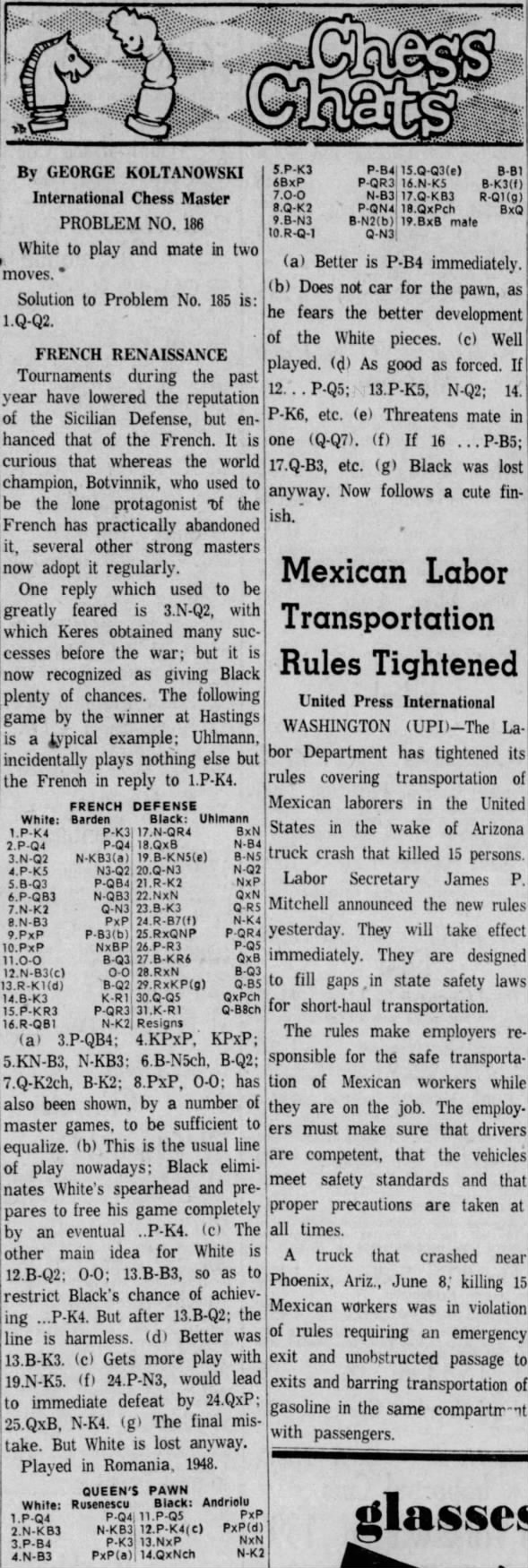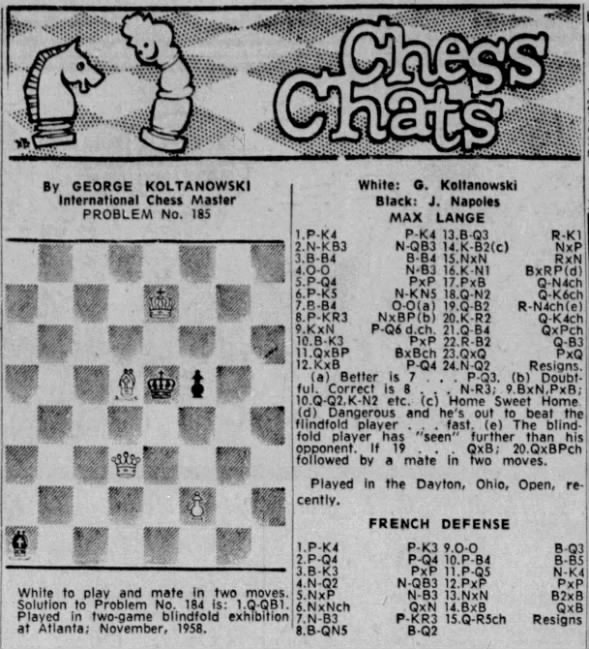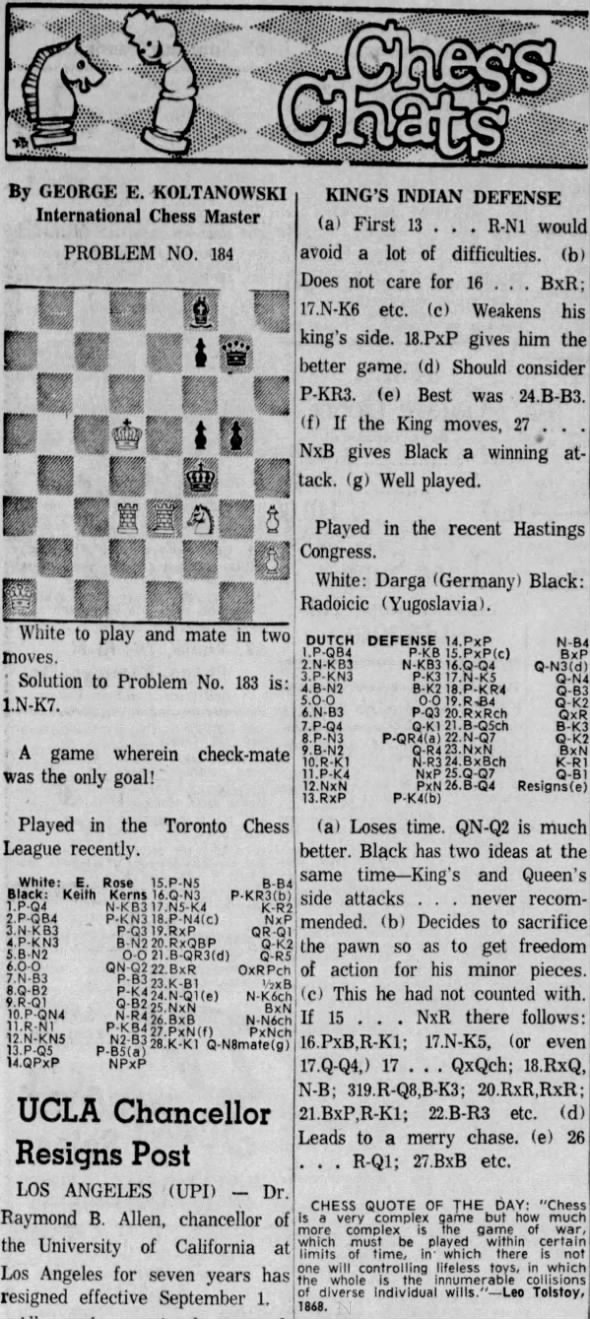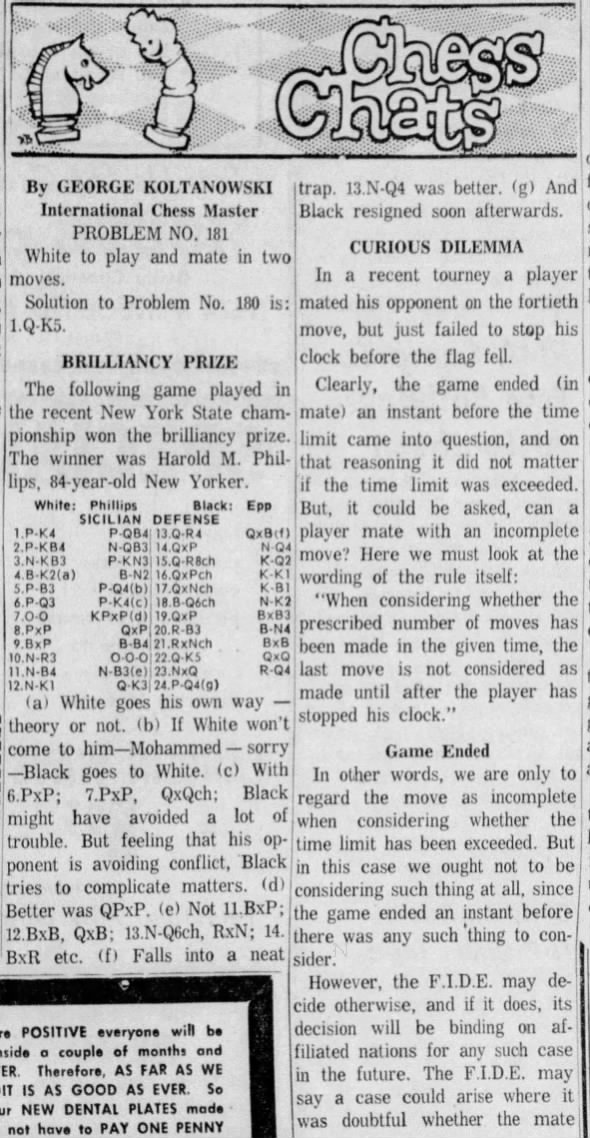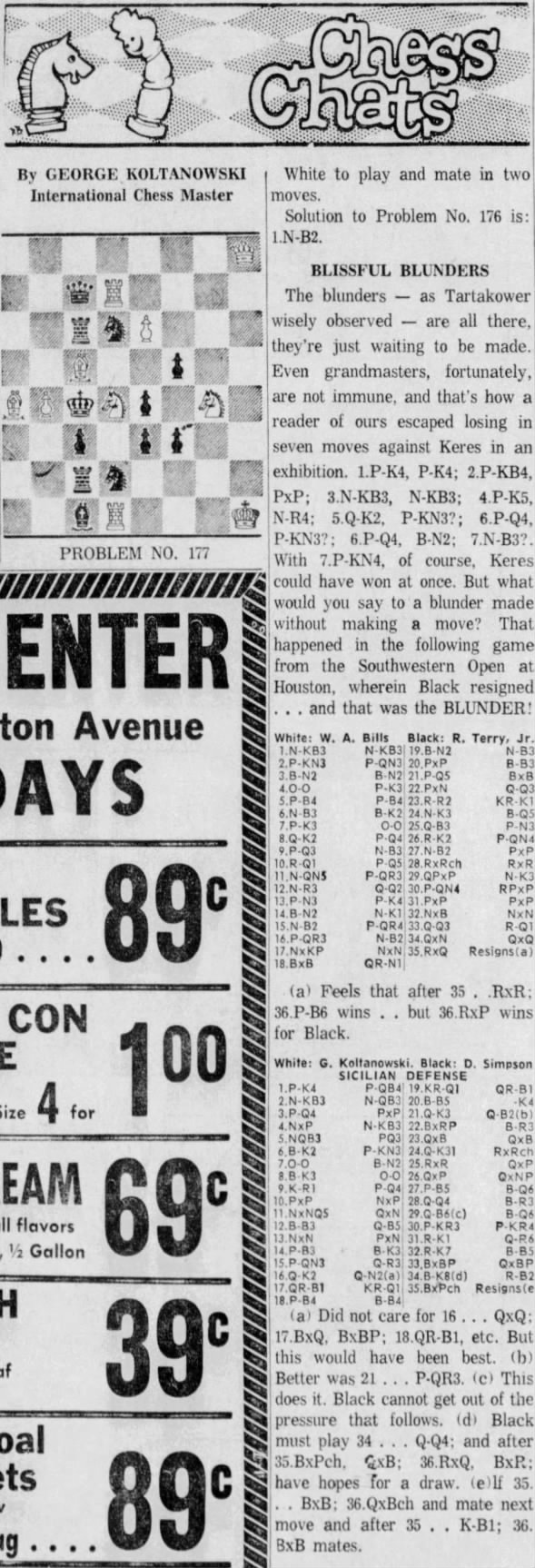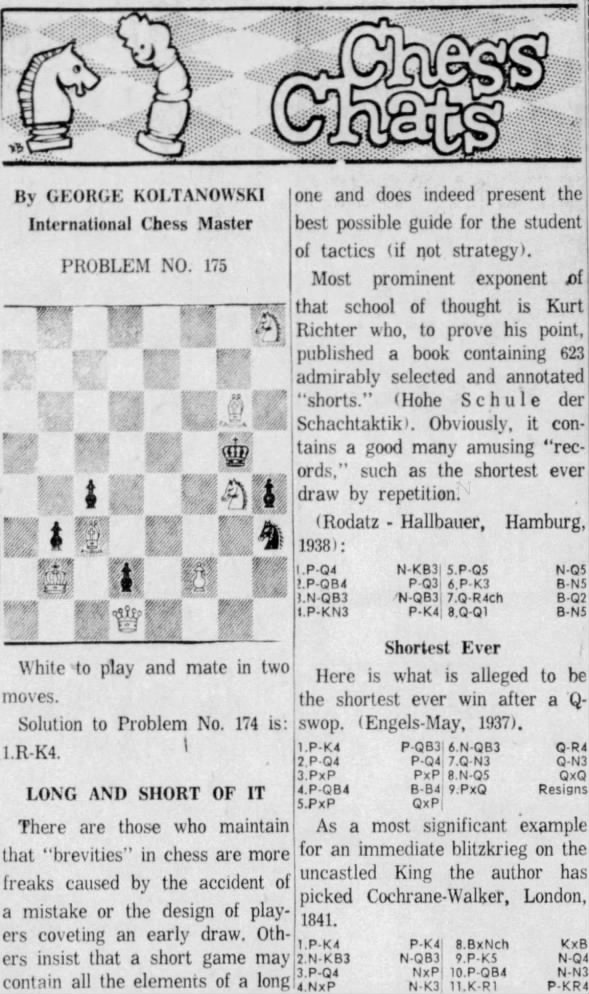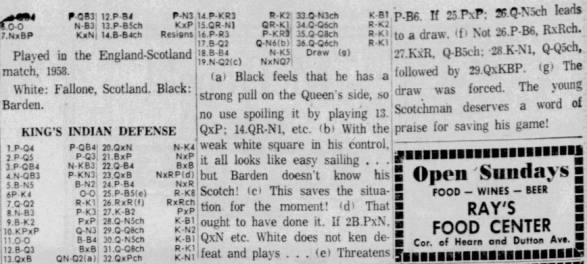
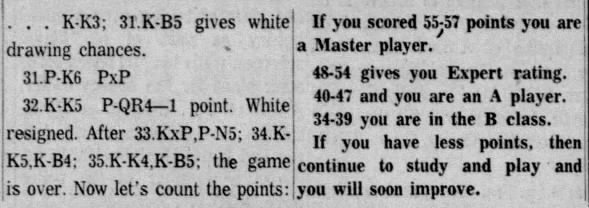 Chess Chats 26 Jul 1959, Sun The Press Democrat (Santa Rosa, California) Newspapers.com
Chess Chats 26 Jul 1959, Sun The Press Democrat (Santa Rosa, California) Newspapers.com
Chess Chats by George Koltanowski
International Chess Master
For The Student
In the following game, the first moves made were: 1. P-Q4 N-KB3; 2. N-KB3 P-KN3; 3. P-B4 P-Q4; 4. PxP.
FEN N1K3bN/3pp2n/R1p1k3/5p2/3P3Q/8/8/BB1Rr3 w - - 0 1
From now on, you cover the Black moves. Try to find out what you would do, and then compare your move with the move actually made, and see the number of points you have earned. The total number of points will tell you how well you play!
… . B-N2—You deduc…oints from your total score if you guessed this move. Correct i… …xP (2 points). Fo… …xP (1 point).
5. P-K3 With 5. Q-R4ch, white would keep the pawn he has won, Just see… …-Q2; 6. Q-N3 etc. or 5… . Q-Q2: 6. QxQch NxQ; 7. N-B3 followed by P-K4.
… 0-0—Three points. If you played 5… . NxP, you get onl…oints. The pawn cannot be held by White, so castling is best.
6. N-B3 NxP—1 point. Anything else and you take off two points.
7. Q-N3 NxN—2 points. Als…oints, for bot…hellip; P-K3 o… . Q-B3.
8. PxN P-B4—4 points. It shows initiative. White can't afford to take the pawn. If 8 … P-B3; 2 points.
9. B-N2 N-B3—2 points. If 9… PxP; 1 point. If 10. PxP Q-R4 is contemplated.
10. B-K2 B-K3-4 points. Only because it is hard to know if the move is good or bad. If ll. QxP B-Q4; 12. Q-R6 PxP; with all kinds of possibilities. For 10. … . PxP; 2 points.
11. Q-R4 PxP—2 points. If any thing else, you lose two points.
12. BPxP Q-R4ch-4 points. Plays for two against one on the Q's side, ending. For 12… B-Q4 with P-K4 in mind, you get 3 points. For 12. … P-QR3; 1 point.
13. QxQ NxQ.
14. B-B3 N-B3—2 points. If 14. … P-N3; you lose 4 points. For 14. … N-B5 you get 1 point.
15. P-KR3 B-Q4—2 points. P-K4 may eventually help the game.
16. K-Q2 KR-Q1—3 points. A natural as now P-K4 is a very strong threat. You keep the QR for eventual going to QB1. If 16. … P-K4; 1 point.
17. K-B2 QR-B1—2 points.
18. K-N2 P-K4—3 points. Black pieces are all set for attacking the White King, so the position must be broken open if possible. If 18. … P-QN4; 1 point.
19. PxP BxN—1 point. If BxKP or NxKP you lose 2 points.
20. PxB NxP—2 points. Black threatens N-Q6ch and BxBeh. If 20. … BxP, you get 4 points! If 21. QR-QB1 R-Q7 ch wins, or 21.BxB R-Q7ch etc. or 21. KR-Q1 BxBch; 22. KxB N-Q5 d.ch. etc.
21. QR-B1 N-Q6ch—4 points. If 21. … N-B5ch, you lose 3 points. Same goes for 21. … RxB.
22. BxN RxBB6—3 points. That connects with black's last move. If 22. … RxBQ6, 1 point.
23. RxR RxB
24. R-QB1 RxR
25. RxR K-B1—2 points. Nothing for BxRch, as the text-move gains a move.
26. P-B4 K-K2—1 point.
27. P-K4 BxR plus.
28. KxB K-Q3
29. K-Q4 P-QN4—2 points. Black strength lies on the Queen's side, so he must get that strength lined, up for action as soon as possible. For 29. … P-B3; 30. P-K5ch you give White counter-chances. You lose 3 points for 29. P-B3.
30. P-K5ch K-B3—3 points. If 30. … K-K3; 31. K-B5 gives white drawing chances.
31. P-K6 PxP
32. K-K5 P-QR4—1 point. White resigned. After 33. KxP P-N5; 34. K-K5 K-B4, 35. K-K4 K-B4; the game is over. Now let's count the points:
If you scored 55-57 points you are a Master player.
48-54 gives you Expert rating.
40-47 and you are an A player.
34-39 you are in the B class.
If you have less points, then continue to study and play and you will soon improve.


